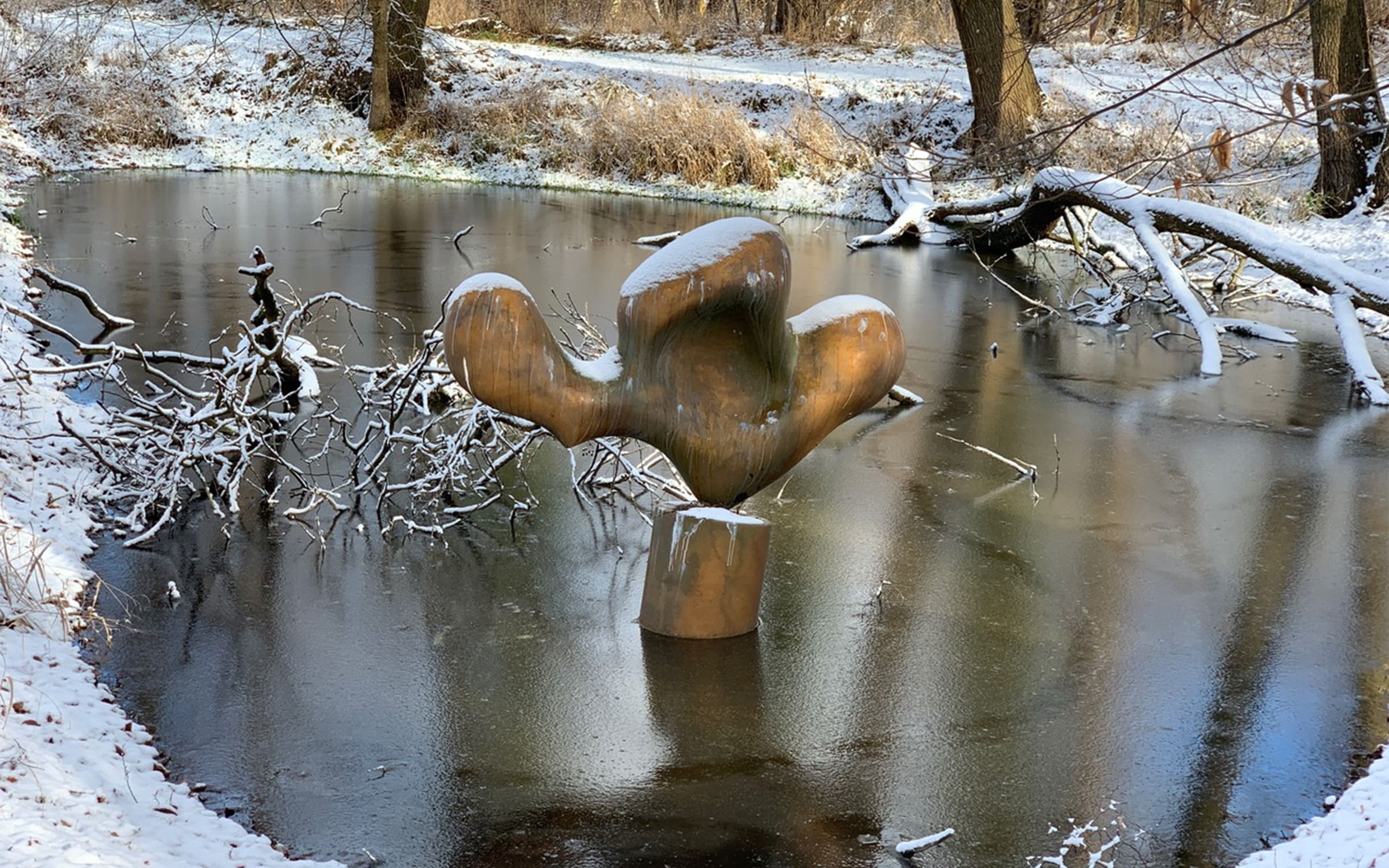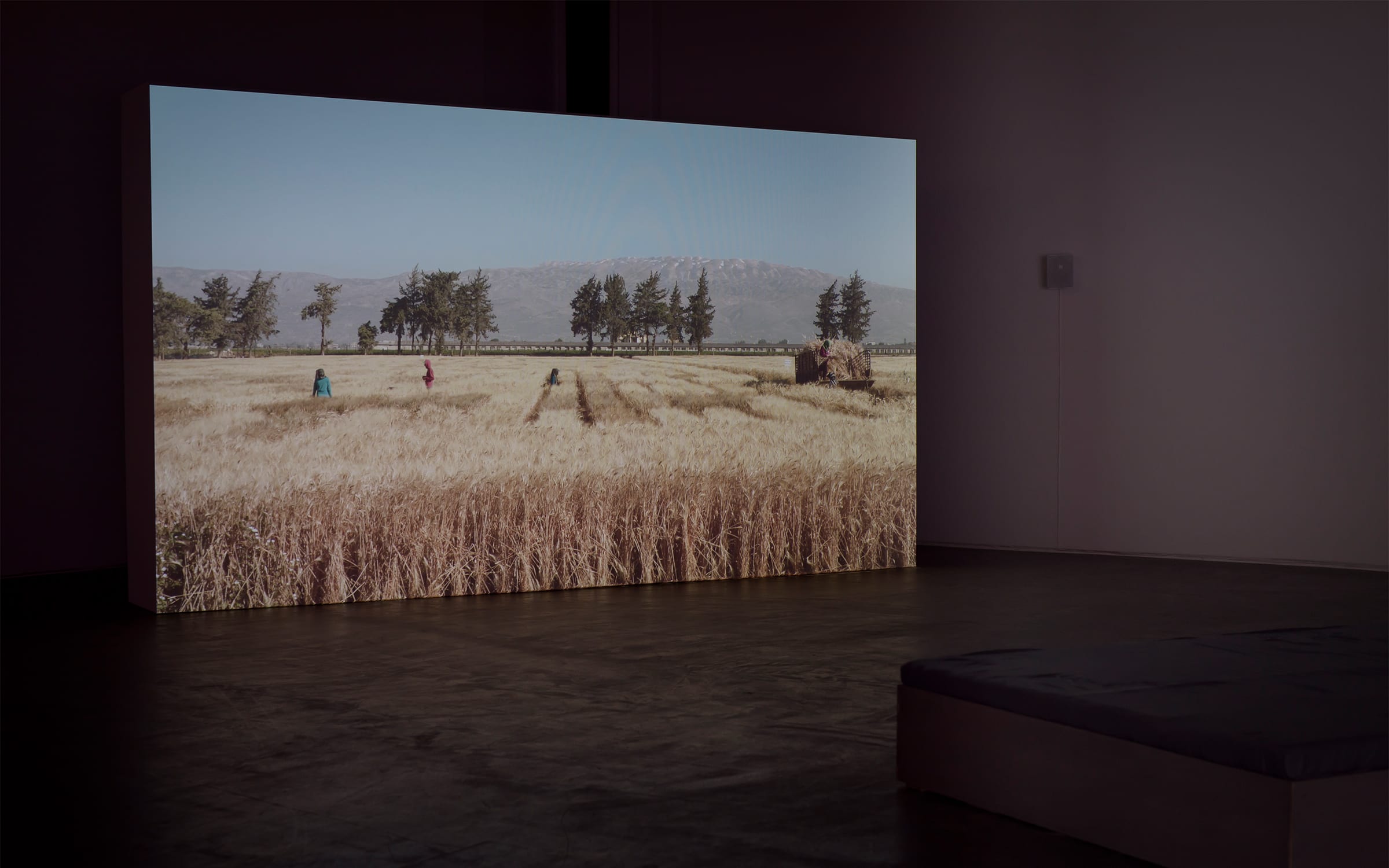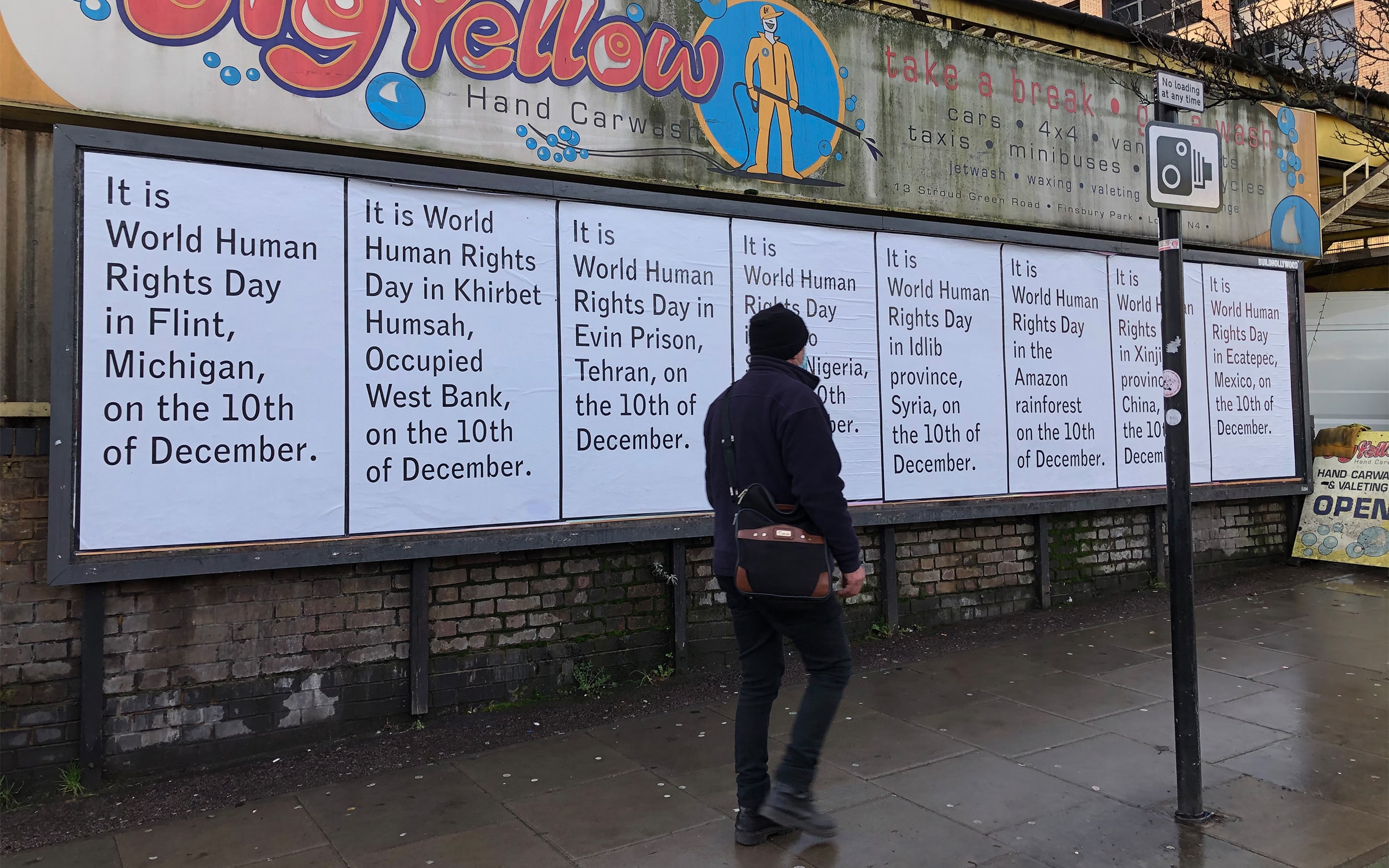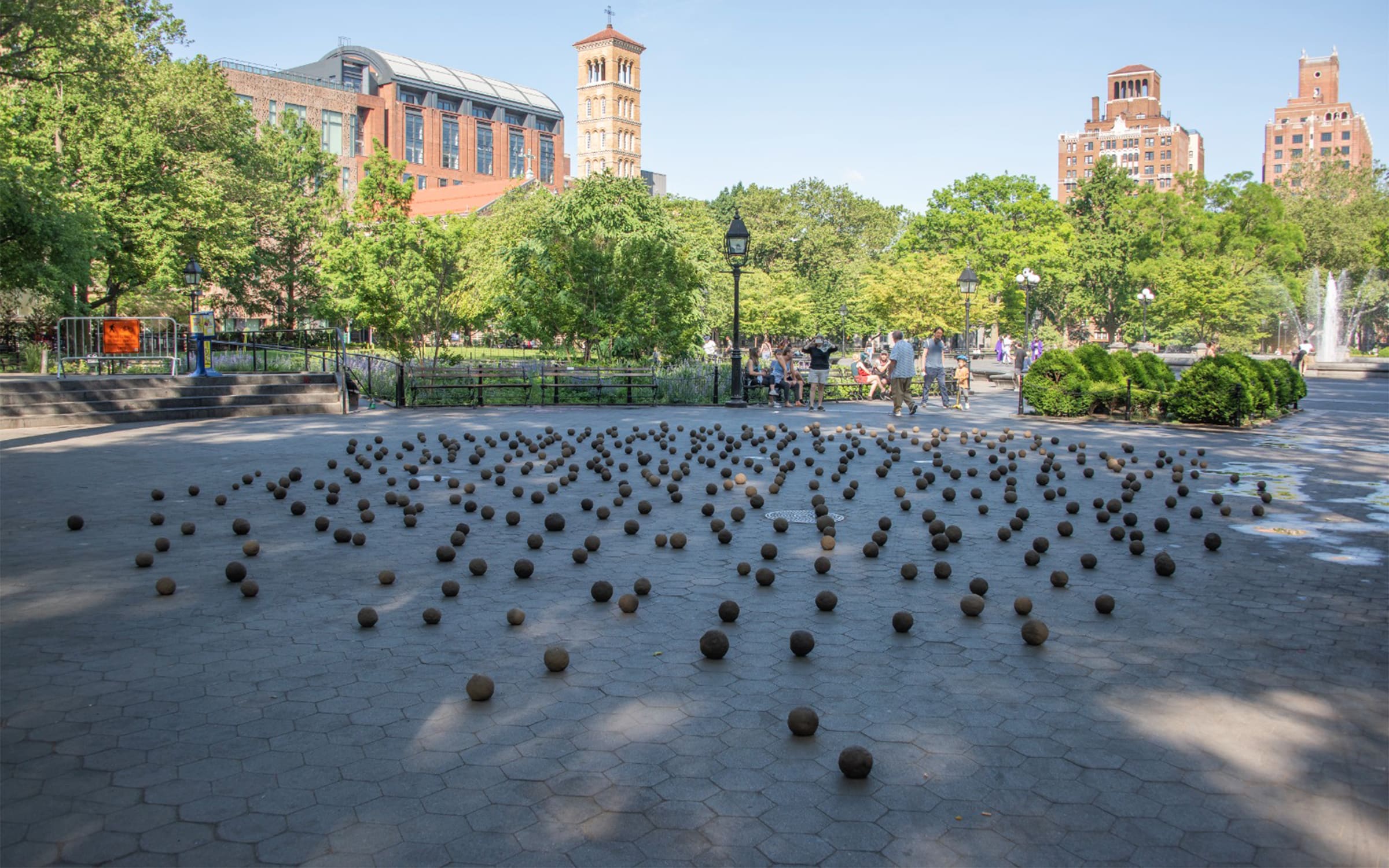 Courtesy of Maria Loboda and Galerie Thomas Schulte, Berlin.
Courtesy of Maria Loboda and Galerie Thomas Schulte, Berlin. Jumana Manna, Wild Relatives, 2018. Courtesy of the artist and Hollybush Gardens, London. Photo by Louis Haugh.
Jumana Manna, Wild Relatives, 2018. Courtesy of the artist and Hollybush Gardens, London. Photo by Louis Haugh. Jeremy Deller, World Human Rights Day, 2020. Courtesy of the artist; Art : Concept, Paris; and The Modern Institute, Glasgow.
Jeremy Deller, World Human Rights Day, 2020. Courtesy of the artist; Art : Concept, Paris; and The Modern Institute, Glasgow. Bosco Sodi, Tabula Rasa, 2021/22. Courtesy of the artist and König Galerie, Berlin, London, Seoul, and Vienna.
Bosco Sodi, Tabula Rasa, 2021/22. Courtesy of the artist and König Galerie, Berlin, London, Seoul, and Vienna.






